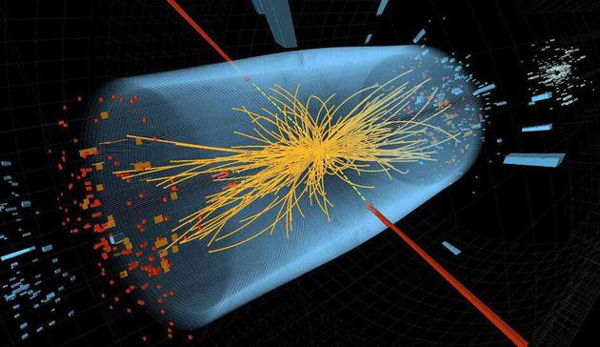CERN, the European Organization for Nuclear Research, is like a little city. Straddling the border of France and Switzerland, it employs three thousand people and occupies a site that is measured in square miles. CERN boasts a string of magnets that weigh more than the Eiffel Tower and an underground tunnel over sixteen miles around.
歐洲核研究組織簡直像個小城市。它地跨法國和瑞士邊境,有3000名雇員,占地幾平方公里。歐洲核研究組織有一排比埃菲爾鐵塔還要重的磁鐵,周圍有一條大約26公里長的地下坑道。
Breaking up atoms, as James Trefil has noted, is easy; you do it each time you switch on a fluorescent light. Breaking up atomic nuclei, however, requires quite a lot of money and a generous supply of electricity. Getting down to the level of quarks—the particles that make up particles—requires still more: trillions of volts of electricity and the budget of a small Central American nation. CERN's new Large Hadron Collider, scheduled to begin operations in 2005, will achieve fourteen trillion volts of energy and cost something over $1.5 billion to construct.
詹姆斯·特雷菲爾說,擊碎原子倒還容易,每次只要把日光燈一開。然而,擊碎原子核就需要大量的金錢和大量的電力。把粒子變成夸克──即構成粒子的粒子──就需要更多的電和更多的錢:幾萬億瓦電和相當于一個中美洲小國的預算。歐洲核研究組織的一臺新的大強子對撞機定于2005年開始運轉,它將產生14萬億瓦能量,建設費超過15億美元。

There are practical side effects to all this costly effort. The World Wide Web is a CERN offshoot. It was invented by a CERN scientist, Tim Berners-Lee, in 1989.
這項費用浩大的工程有一些實用的副產品。萬維網就是歐洲核研究組織的一個衍生事物。它是歐洲核研究組織的科學家蒂姆-伯納斯·李于1989年發明的
But these numbers are as nothing compared with what could have been achieved by, and spent upon, the vast and now unfortunately never-to-be Superconducting Supercollider, which began being constructed near Waxahachie, Texas, in the 1980s, before experiencing a supercollision of its own with the United States Congress.
然而,這兩個數字與那臺超級超導對撞機本來所能產生的能量和所需的建設費用相比,那簡直是小巫見大巫。20世紀80年代,得克薩斯州附近開始建設一臺超級超導對撞機,然后本身與美國國會發生了超級對撞,結果很不幸,現在永遠建不成了。












